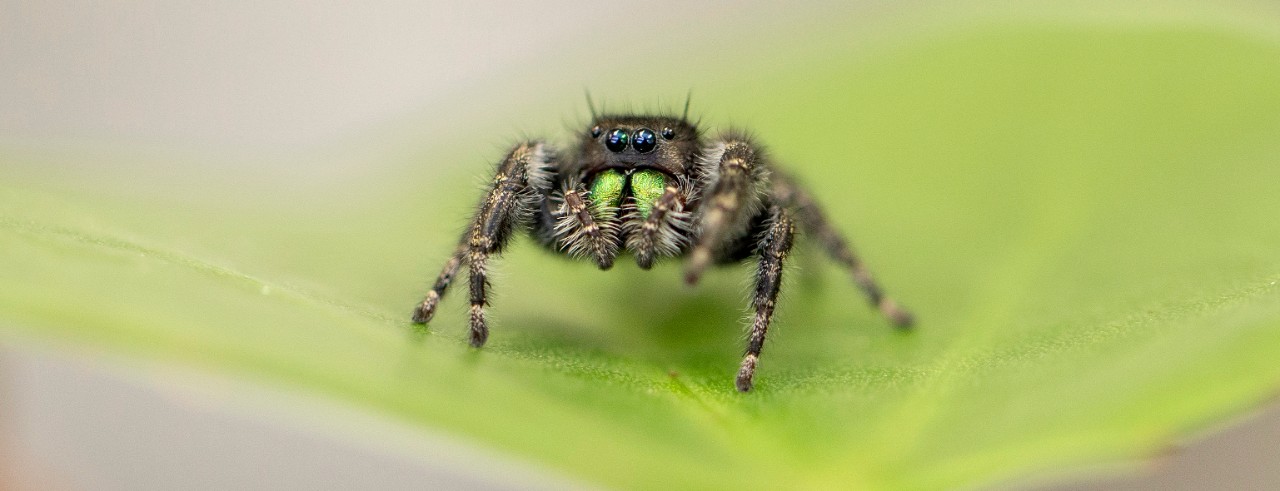
Scientific American: Baby jumping spiders see surprisingly well
UC biologists found that baby spiders have vision nearly as good as their parents
Biologists at the University of Cincinnati have demonstrated that baby jumping spiders have vision nearly as good as their parents.
It's an understandable adaptation for a predator that hunts for a living. But until now, scientists weren't sure how they managed it.

UC biology professor Elke Buschbeck. Photo/Ravenna Rutledge/UC Creative Services
Scientific American spoke to UC associate professor Nathan Morehouse about how baby spiders fit the architecture of their keen vision into such a tiny package. Morehouse, UC biology professor Elke Buschbeck and Morehouse's former student at the University of Pittsburgh, John Thomas Gote, co-authored a study that appeared in the journal Vision Research.
Morehouse and Buschbeck used her custom-made micro-ophthalmoscope to examine the eyes of baby spiders. They found that the baby spiders have the same number of photoreceptors as adults but packed differently to fit in a smaller volume.
Morehouse is using a National Science Foundation grant to study spider vision around the world. He traveled to Singapore with an international team of researchers earlier this year.
"Even arachnophobic people find these little jumping spiders to be compelling – they dance, they sing vibratory songs to each other,” Morehouse told the magazine.

UC biologist Nathan Morehouse uses microspectrophotometry in his lab to measure how photoreceptor cells in spiders absorb light. Photo/Jay Yocis/UC Creative Services
Become a Bearcat
Do you like the idea of conducting your own biology research? Apply online or get more information about undergraduate enrollment by calling 513-556-1100. Learn more about UC's many undergraduate and graduate programs.
Related Stories
Fusion reactors may be key to uncovering dark matter
December 22, 2025
Yahoo! News highlights a new study by University of Cincinnati physicist Jure Zupan that explains how fusion reactors might create subatomic particles associated with dark matter.
UC public relations course reaches vulnerable community
December 19, 2025
Rather than having students find opportunities for real world applications of their degrees beyond class, why not bring it to them in the classroom? The public relations campaigns class, offered through the communications department in UC’s College of Arts and Sciences, gives students a taste of experience in the field.
Bazinga! UC physicist cracks ‘Big Bang Theory’ problem
December 19, 2025
A physicist at the University of Cincinnati and his colleagues figured out something two of America’s most famous fictional physicists couldn’t: theoretically how to produce subatomic particles called axions in fusion reactors.
